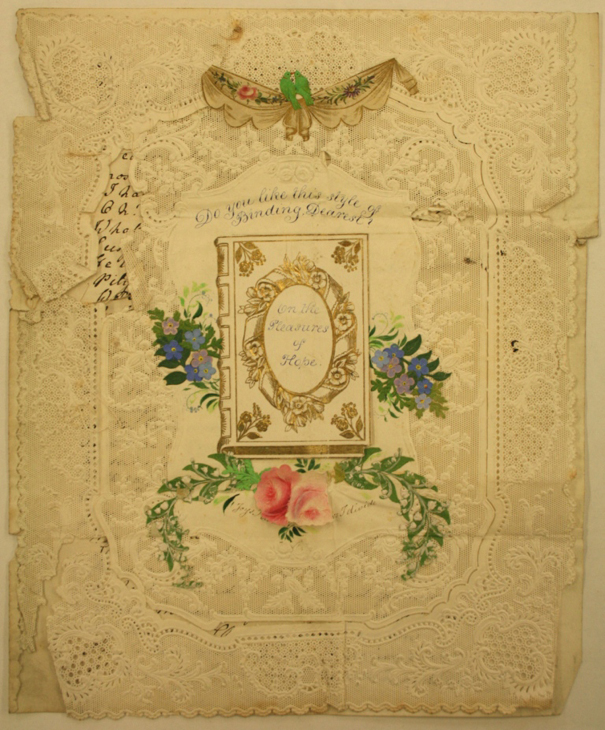For some, poetry is a dying art. With technology like text messaging, emails, and social media websites, the way in which people express themselves to their loved ones is becoming more plain and abbreviated.
What a treasure it is then, to be able to search back through time for words of inspiration, to an age when it was common for people to engage in long verses just to say ‘I love you’ on Valentine’s Day.
At East Riding of Yorkshire Council’s archives and local studies service at the Treasure House, in Champney Road, Beverley, this is exactly what people can do.
Among one of the estate collections – the archives of the Grimston Family of Grimston Garth – are two examples of how ‘love’ has been expressed over the past 250 years.
The first is what we would today call a Valentine’s card, from the mid-19th Century, entitled ‘On the Pleasures of Hope: Joys I Double, Sorrows I Divide’, in which a 16-year old youth proposes marriage in a heartfelt Valentine’s message to a girl named Florence, of the same age. The verse ends:
“To share with me both real and woe,
Oh! Do not! Do not answer no
The bleeshing whispers meek and mild,
Can you consent to wed a child?
If so, I’m ready to be thine,
So take me for your Valentine.”
Collections Officer, Sam Bartle, said: “Such powerful words coming from an adolescent young man might seem unusual to us now, but this was quite normal around the 1850s as people tended to marry at a younger age.”
“The boy’s use of the word ‘child’ should perhaps not be taken too literally, as it seems that he uses this as a more poetic alternative to the words ‘youth’ or ‘adolescent’.”
Also in the Grimston papers is a song from around 1760, entitled ‘The Constant Lover’ by the famous baroque composer William Boyce. It was probably written for the organ, and would have been the 18th Century equivalent of a love song by ‘Take That’.
Mr Bartle said: “Our copy of the songsheet is by no means unique, in fact it was published widely at the time, but it provides us with a fine example of an 18th Century love song.”




